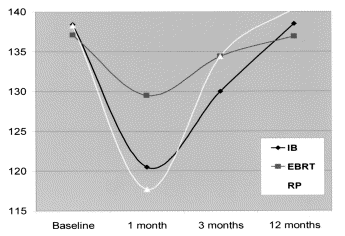|
The way to
decide on treatment you need to consider basically three things:
1. The nature of the cancer (how aggressive.) See section
on prognosis and stage. Some cancers
are so slow growing and favorable (so called A1) that no treatment is probably necessary (see section on watchful waiting)
and some tumors so advanced (very high Gleason score or PSA) that local treatment would
not cure the patient anyway.
2. The life expectancy of the patient. If the man has multiple other serious life
threatening problems, he may not tolerate aggressive therapy or may not live long enough
to benefit. On the other hand, life expectancy is sometime longer that you might think.
See life expectancy table.
3. Side effects of the treatments and survival comparisons. If the patient has a curable
disease and a long enough life expectancy that merits treatment; and since the cure rates
are similar with surgery, external beam radiation, or seed implant; then he should make the decision based on side effects of the treatments.
(Randomized trials are underway to once and for all try to determine if the cure
rates are similar or if they are better with one form of treatment. The ACOSOG Z0070 trial randomizes men with favorable
prostate cancer (T1c, T2a, Gleason 6 or lower and PSA 10 or lower) to either radical
prostatectomy or seed implantation.) Surgery carries a risk of impotence and a small risk
of incontinence, the side effects of radiation are noted elsewhere. Certain comparisons are as noted, and here; and the
quality of life study below) review all the sections on the main page (particulary the side effects/ complication section.) |

